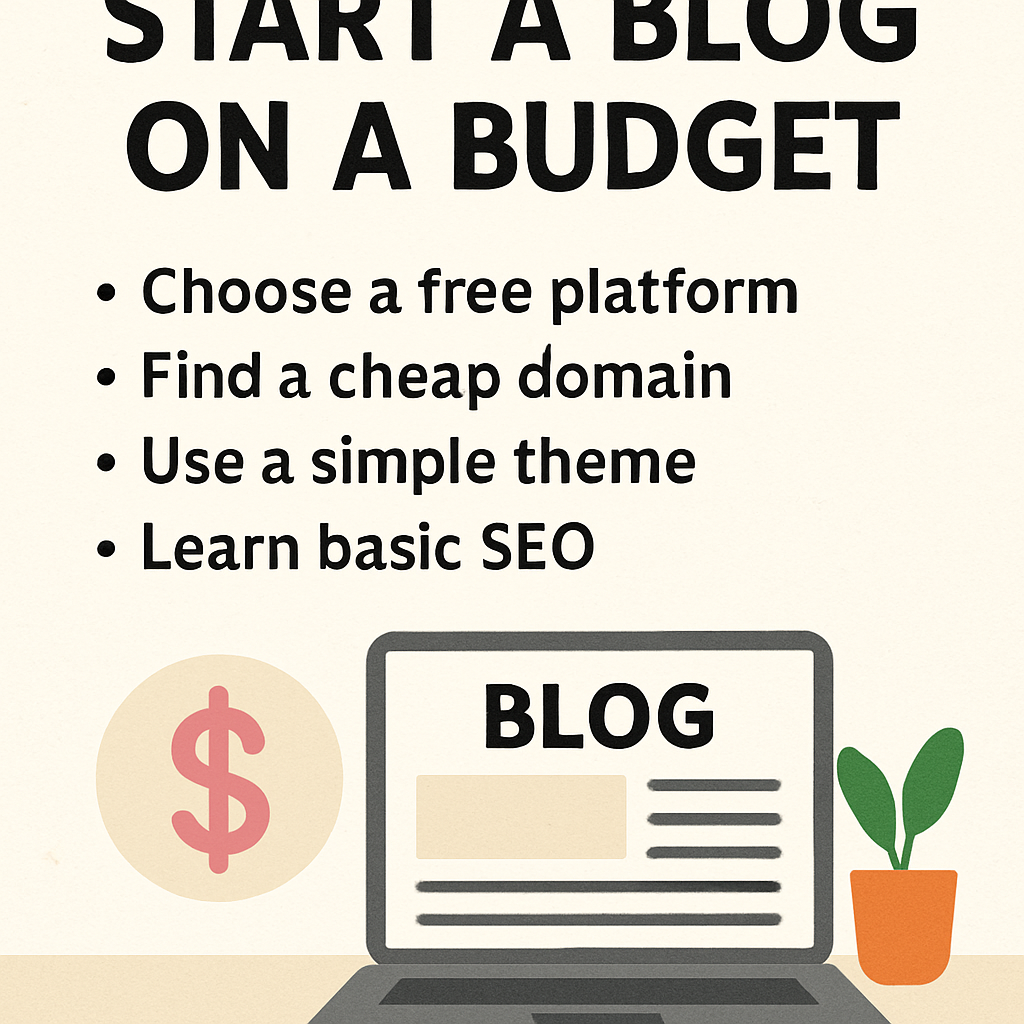Before diving into the specifics, let’s take a moment to discuss why you might want to start a blog. Blogging is a powerful platform for expressing yourself, sharing knowledge, and even making money. Whether you aim to build a personal brand, promote your business, or simply connect with like-minded individuals, a blog can be a versatile tool for achieving your goals.
Blogging provides a creative outlet where you can express your thoughts, ideas, and passions. Whether it’s through writing, photography, or videos, a blog allows you to share your unique perspective with the world. This can be especially rewarding if you’re passionate about a particular subject and want to educate or inspire others.
In today’s digital age, personal branding is more important than ever. A blog can serve as a platform to showcase your expertise and establish yourself as an authority in your field. By consistently sharing valuable content, you can build a reputation that sets you apart from others and opens up new opportunities.
Blogging is not just about sharing your voice; it’s also about building a community. Through your blog, you can connect with readers who share your interests and values. Engaging with your audience through comments and social media can lead to meaningful relationships and a sense of belonging.
The first step in starting a blog is deciding what you’ll write about. This is known as choosing your niche. A niche is a specific topic or category that your blog will focus on. When selecting a niche, consider your interests, expertise, and what you’re passionate about. This will help you stay motivated and create content consistently.
Think about topics you’re passionate about and have some knowledge of. If you love fashion, starting a fashion blog on a budget might be the perfect fit. The key is to choose something you enjoy, as this will make blogging feel less like work and more like a fun and fulfilling hobby. Passion-driven content is often more engaging and authentic.
While passion is crucial, it’s also important to consider the demand for your chosen niche. Conduct market research to identify trends and gaps in the content available. Tools like Google Trends and keyword planners can help you gauge interest levels and competition. Finding a balance between passion and demand is key to a successful blog.
Once you’ve chosen a niche, think about how you can differentiate your blog from others. Consider your unique perspective, experiences, or expertise that you can bring to the table. Identifying a unique angle will help you stand out in a crowded market and attract a dedicated audience.
Now that you’ve chosen your niche, it’s time to set up your blog. This involves selecting a platform, choosing a domain name, and finding affordable hosting.
There are several blogging platforms to choose from, each with its pros and cons. For beginners on a budget, WordPress.com and Blogger are popular choices. They offer free plans, allowing you to start without any upfront costs. However, if you want more control and customization options, consider using WordPress.org, which is free but requires separate hosting. Evaluate the features and limitations of each platform to make an informed decision.
Your domain name is your blog’s address on the internet. It’s important to choose a name that’s memorable, easy to spell, and reflects your niche. While some blogging platforms offer free subdomains (e.g., yourblog.wordpress.com), investing in a custom domain (e.g., yourblog.com) is recommended for a more professional appearance. Domain registration can be affordable, with many providers offering competitive prices. Spend time brainstorming a name that aligns with your brand.
If you opt for WordPress.org, you’ll need hosting. Hosting is the service that stores your blog’s files and makes them accessible online. Many hosting providers offer budget-friendly plans, especially for beginners. Look for reputable companies that provide good customer support and reliable uptime. Compare different hosting options to find the best fit for your needs and budget.
After setting up your blog, consider installing essential plugins to enhance functionality. Plugins can help with SEO, security, and performance optimization. Look for free or affordable plugins that offer the features you need. Be cautious not to overload your site with too many plugins, as this can affect performance.
Security is crucial for any online platform. Implement security measures to protect your blog from potential threats. Use strong passwords, enable two-factor authentication, and keep your software up to date. Consider using a security plugin to add an extra layer of protection to your site.
A visually appealing blog can attract and retain readers. Fortunately, you can design a beautiful blog without spending a fortune.
Most blogging platforms offer a variety of free themes that you can use to design your blog. These themes are customizable, allowing you to change colors, fonts, and layouts to suit your style. If you want more advanced features, consider purchasing a premium theme, but there are plenty of free options that look great. Explore different themes to find one that aligns with your brand and vision.
Once you’ve chosen a theme, spend some time customizing your blog’s appearance. Add a logo, create a header image, and arrange your sidebar widgets. Many platforms offer drag-and-drop customization options, making it easy to create a professional-looking blog. Pay attention to user experience and ensure your design is mobile-friendly.
User experience plays a significant role in retaining readers. Ensure your blog is easy to navigate, with clear menus and search functionality. Optimize loading times by compressing images and using caching plugins. A positive user experience can lead to higher engagement and repeat visits.
Visual elements can enhance the appeal of your blog. Use high-quality images and graphics to complement your content. Consider creating custom graphics or infographics to add a unique touch. Visuals can break up text and make your blog more engaging.
Consistency in design elements helps create a cohesive brand identity. Use a consistent color palette, typography, and style across your blog. Consistency builds trust and recognition among your audience. Regularly update your design to keep it fresh and aligned with your evolving brand.
Content is the heart of your blog. Creating engaging and valuable content is essential for attracting and retaining readers.
Start by brainstorming topics that align with your niche and audience’s interests. Create an editorial calendar to plan your posts and ensure a consistent posting schedule. This will help you stay organized and maintain a steady flow of content. Consider seasonal topics or current trends to keep your content relevant.
When writing blog posts, focus on providing value to your readers. Use clear and concise language, and break up your content with headings, bullet points, and images to make it more readable. Aim for a friendly and conversational tone to connect with your audience. Encourage reader interaction through comments and social media.
Search engine optimization (SEO) is crucial for driving traffic to your blog. Use relevant keywords naturally in your posts, including in titles and headings. Additionally, use meta descriptions and alt tags for images to improve your blog’s visibility in search engine results. Regularly update old posts to keep content fresh and optimized.
Evergreen content remains relevant over time and can continuously attract traffic. Focus on timeless topics that provide lasting value to your readers. Update and repurpose evergreen content to maintain its relevance and effectiveness. Balancing evergreen content with timely posts can diversify your content strategy.
Engagement is key to building a loyal audience. Encourage readers to leave comments, share your content, and subscribe to your newsletter. Respond to comments and engage with your audience on social media. Building a community around your blog fosters loyalty and enhances the reader experience.
To grow your blog’s audience, you’ll need to promote it effectively. Here are some budget-friendly ways to get the word out.
Social media platforms are powerful tools for promoting your blog. Share your posts on platforms like Instagram, Twitter, and Facebook to reach a wider audience. Engage with your followers and participate in relevant communities to build a loyal readership. Use social media analytics to track performance and refine your strategy.
Connect with other bloggers in your niche to build relationships and gain exposure. Comment on their posts, participate in guest blogging opportunities, and collaborate on projects. Networking can help you learn from others and expand your blog’s reach. Attend virtual events or webinars to connect with industry peers.
Email marketing is an effective way to nurture relationships with your audience. Build an email list by offering valuable incentives, such as free downloads or exclusive content. Send regular newsletters to keep subscribers informed and engaged. Personalize emails to create a more meaningful connection with your audience.
Join online communities related to your niche to connect with potential readers. Participate in discussions, share your expertise, and provide value to community members. Avoid blatant self-promotion and focus on building genuine relationships. Communities can be a valuable source of traffic and feedback.
Consider using search engine marketing (SEM) to boost your blog’s visibility. While paid advertising requires a budget, even small investments can yield significant results. Use platforms like Google Ads to target specific keywords and reach a broader audience. Monitor campaign performance to optimize your strategy.
Once you’ve established your blog and built an audience, you may want to explore monetization opportunities. Here are some ways to make money from your blog.
Affiliate marketing involves promoting products or services and earning a commission for each sale made through your referral link. Choose products that align with your niche and audience’s interests for the best results. Disclose affiliate relationships transparently to maintain trust with your audience.
If you have expertise in a particular area, consider creating and selling digital products, such as e-books, online courses, or printables. These products can provide value to your readers and generate income for your blog. Promote your products through your blog and email marketing to reach potential buyers.
Advertising networks like Google AdSense allow you to display ads on your blog and earn money based on clicks or impressions. While ads can be a source of income, it’s essential to balance them with user experience to avoid overwhelming your readers. Experiment with ad placements to find the most effective configuration.
Leverage your skills and expertise by offering services related to your niche. Whether it’s consulting, coaching, or freelance work, services can be a lucrative income stream. Use your blog to showcase your skills and attract potential clients. Provide exceptional service to build a positive reputation.
As your blog grows, you may receive opportunities for sponsored content. Brands may pay you to create content that promotes their products or services. Ensure sponsored content aligns with your values and interests your audience. Clearly label sponsored content to maintain transparency and trust.
Starting a blog on a budget is entirely possible with careful planning and resourcefulness. By selecting the right tools, creating valuable content, and promoting your blog effectively, you can build a successful blogging venture without breaking the bank. So, what are you waiting for? Start your blogging journey today and share your unique voice with the world. Embrace the challenges and opportunities that come your way, and remember that persistence and passion are key to long-term success in the blogging world.




